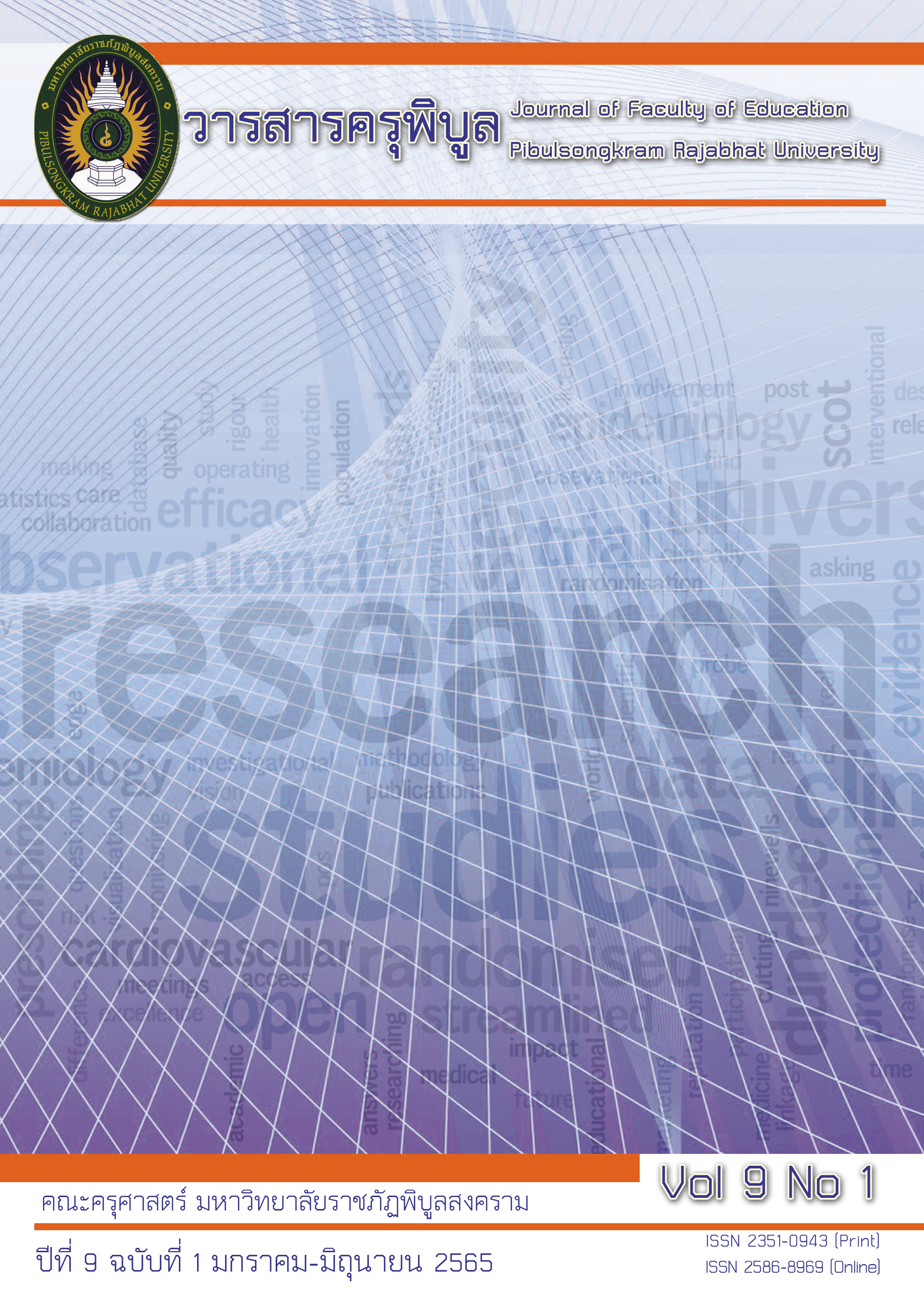BRAIN-TARGETED TEACHING MODEL TO CLASSROOM IN 21ST CENTURY
Keywords:
Teaching model, Brain-targeted, Brain, Young childrenAbstract
This article aims to present the Brain-Targeted Teaching Model. It is a tool for implementing the knowledge and findings from neuroscience research to instruction. The learners will be able to remember new information, develop a conceptual framework or concept and higher order thinking. The process consisted of 6 components: 1) emotional climate 2) physical environment 3) learning design 4) teaching for mastery 5) teaching for application and 6) evaluating learning. This model is a guideline for teachers to translate knowledge and brain research into classroom in the 21st century.
References
2. วิจารณ์ พานิช. (2555). วิถีสร้างการเรียนรู้เพื่อศิษย์ในศตวรรษที่ 21. กรุงเทพมหานคร: มูลนิธิสดศรี-สฤษดิ์วงศ์.
3. Bertucci, P. J. (2006). A mixed-method study of a brain -compatible education program of grades K-5 in a mid-atlantic inner-city public (Doctoral dissertation). Rhode Island: Johnson & Wales University.
Center on Developing Child at Harvard University. (2021). In brief the science of early childhood development. Retrieved September 19, 2021, from https://developingchild.harvard.edu/resources/inbrief-science-of-ecd/
4. Chowdhury, R. B. (2020). Implementing brain-targeted teaching model to enhance english language teaching and learning process. The English Teacher, 49(3), 89-104.
5. Frey, N. & Fisher, D. (2010). Reading and the brain: what early childhood educators need to know. Early Childhood Education Journal, 38, 103–110.
6. Hardiman, M. (2012). Informing pedagogy through the brain-targeted teaching model. Journal of Microbiology & Biology Education, 13(1), 11-16.
7. Hardiman, M. (2012). The brain-targeted teaching model for 21st century school. California: Corwin.
8. Hardiman, M., Rinne, L., Gregory, E., & Yarmolinskaya, J. (2012). Neuroethics, neuroeducation, and classroom teaching: where the brain sciences meet pedagogy. Neuroethics, 5(2), 135–143.
9. National Association for the Education of Young Children. (2009). Developmentally appropriate practice in early childhood programs serving children from birth through age 8. Washington DC: Author.
10. Parr, T. L. (2016). A brain targeted teaching framework: modeling the intended change in professional development to increase knowledge of learning sciences research and influence pedagogical change in K-12 public classrooms (Doctoral dissertation). Drexel University.
11. Seegers, A. (2020). Brain-targeted teaching as a tool to facilitate implementing mind brain and education science into community college pedagogy (Doctoral dissertation). Maine: University of New England.
Downloads
Published
Issue
Section
License
Copyright (c) 2022 คณะครุศาสตร์ มหาวิทยาลัยราชภัฏพิบูลสงคราม

This work is licensed under a Creative Commons Attribution-NonCommercial-NoDerivatives 4.0 International License.
ลิขสิทธิ์เป็นของคณะครุศาสตร์ มหาวิทยาลัยราชภัฏพิบูลสงคราม


